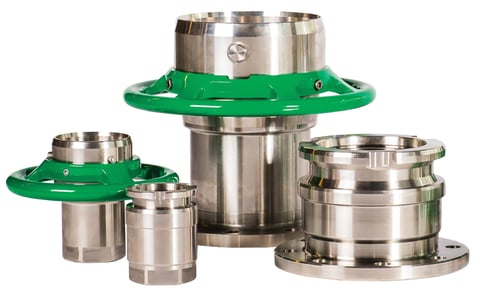
Over the past decade, several companies have established themselves as international experts in the design and functionality of the various components that make up LNG transport systems:
- Dry cryogenic couplings: Dixon and MannTek
- Cryogenic breakaway couplings (standard and cable type): Dixon and MannTek
- Powered emergency release couplings (PERCs): Dixon and MannTek
- LNG transfer hose (composite material): Gutteling
- LNG transfer hose (stainless steel): Hose Master
- LNG transfer hose assemblies: Dixon and MannTek
The superior quality and functionality of these components are based on years of experimentation and evaluation of temperature differentials and how they affect the expansion and contraction of different materials used in the components. These factors include Teflon® seals, the engineered stainless steel mating components and how they are energized. It’s a complex combination of engineering and scientific factors that includes careful evaluation of surface finishes as well as the geometry of how and where the seals make proper contact with the mating components in extreme-cold temperatures.
Adding assurance to the integrity of the product designs, tens of thousands of successful transfers involving millions of gallons of LNG material have been recorded.
Cryogenic Dry Disconnect Couplings
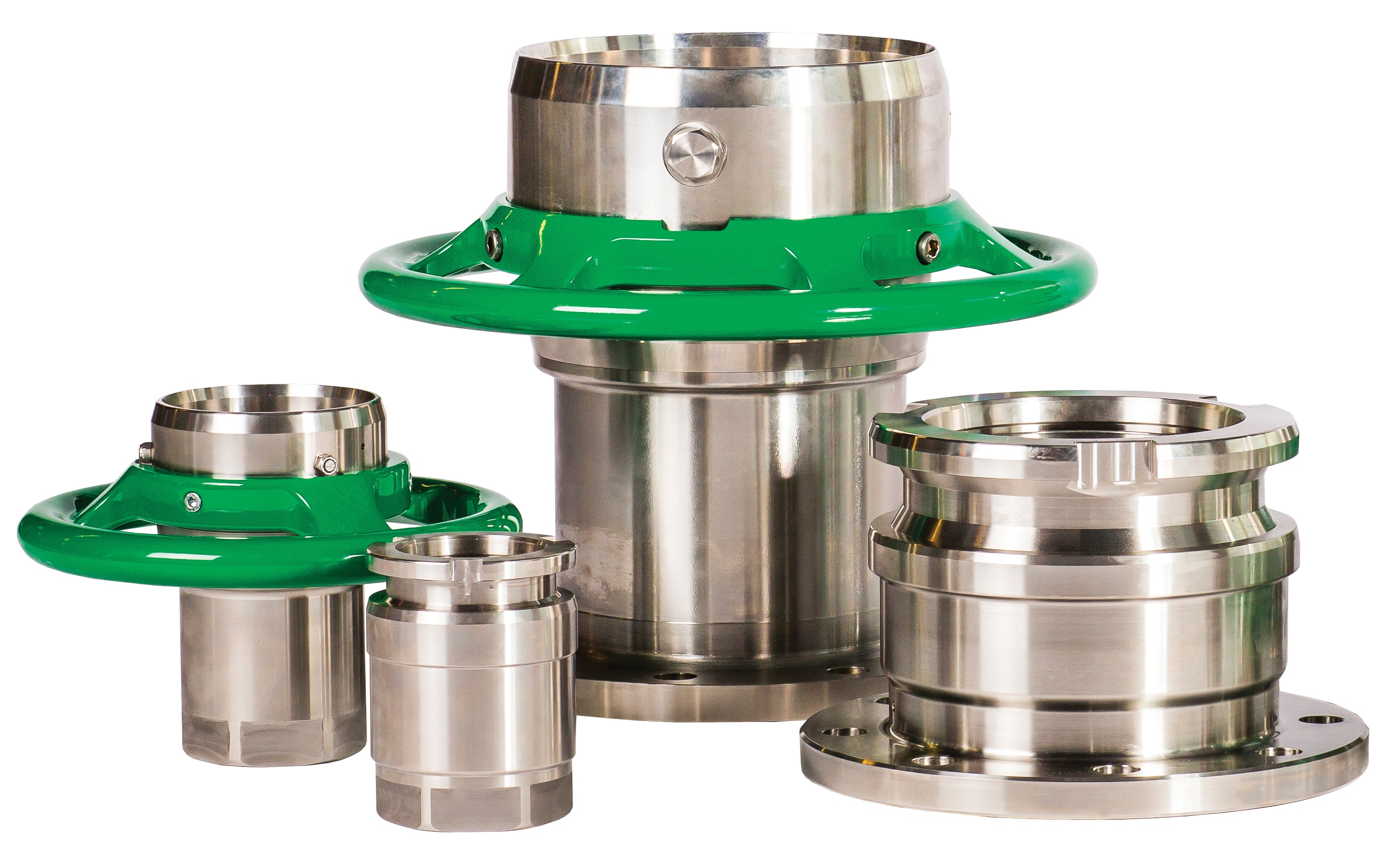
The self-sealing valve design of cryogenic dry disconnect couplings is based on a style that has been used with fuel oil and chemicals for a half-century. Cryogenic dry disconnect couplings consist of a tank unit or adapter with a spring-loaded poppet and hose unit or coupler with a valve driven by an internal cam.
The coupling procedure is simple: align the rollers on the coupler with the notches on the adapter, push the coupler onto the adapter and then rotate past 100 degrees. This procedure locks the coupling together, creates a self-seal, and opens the internal valves for full flow with low-pressure drop. The dual poppet design shutoff mechanism seals liquids and gases safely behind the valve, thereby eliminating fugitive emissions as well as the danger of a spill of LNG fluid.
While the operation of dry disconnect couplings is quite intuitive, it is important that proper personal protective equipment (PPE) be worn during the bunkering process, conforming to standards set by ISO/ DTS 18683:2015 standards established by bodies such as the International Code of Safety for Gas-Fueled Ships (IGF), plus organizations such as the Pipeline and Hazardous Materials Safety Administration (PHMSA), the Society for Gas as a Marine Fuel (SGMF), and the U.S. Coast Guard.
Cryogenic Breakaway Couplings
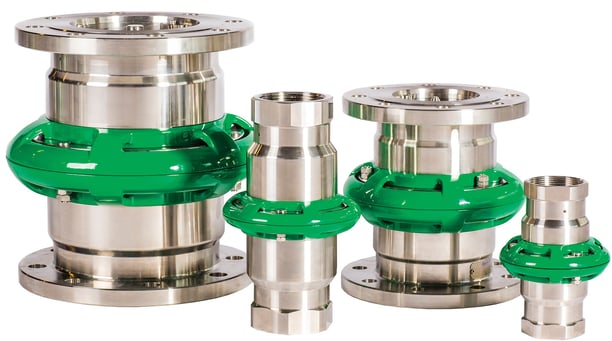
Cryogenic breakaway couplings use a closure mechanism similar to the dry cryogenic coupling, with an optimized poppet designed to close off and stop the liquid flow while containing the LNG in the hose and pipe.
The breakaway couplings have three external break bolts. In the case of axial tension, all of the bolts will take up the force corresponding to the break force on the hose. Non-axial forces concentrate the tension forces more strongly on one bolt, so that the breakaway coupling reacts in a natural way to the reduction of the hose break forces.
Cryogenic breakaway couplings are available in two additional designs, depending on the layout of the bunkering system: Cable release cryogenic breakaway couplings and Powered emergency release couplings (PERCs).
Cable release cryogenic breakaway couplings are designed to minimize fuel spills or damage associated with inadvertent drive-away or pull-away incidents. They are activated by a cable that limits the stress that can be applied to the hose or to the loading equipment. A cable release guards against damage happening to loading arms or other piping and equipment, which might otherwise happen due to the force of the breaking bolts.

Powered emergency release coupling (PERCs) incorporate the ability to actively and remotely release the coupling "on-demand" without causing any strain on the transfer system.
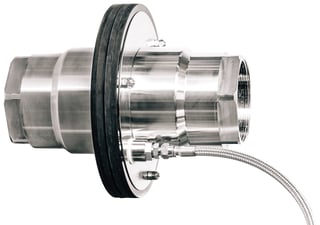
The release of the coupling happens by injecting high-pressurized nitrogen into a dedicated chamber in the coupling body, resulting in instantaneous release of the PERC.
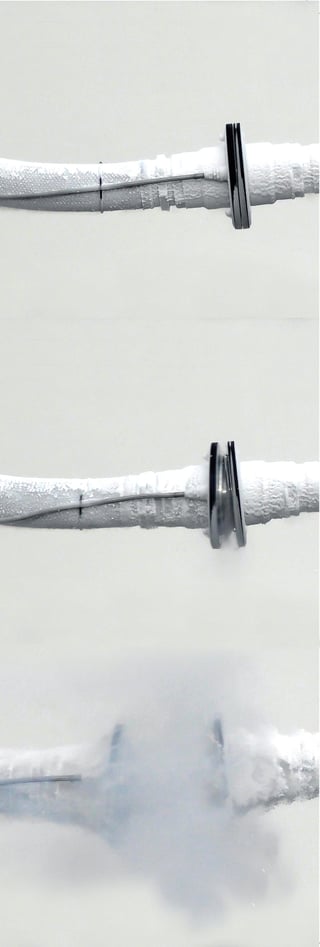
The PERC will also activate and respond to stress on the loading system, thereby giving it both “active” and “passive” security and safety characteristics.
The PERC option is substantially more complex than other breakaway coupling options because of the power pack, activation equipment and other components that are necessary to accomplish PERC’s “on-demand” breakaway functionality. But for some operators, the added expense is worthwhile based on how their bunkering operations are set up, as well as the need for safety.
With all breakaway couplings, repair kits are available that enable the bunkering operation to be brought back online quickly – usually within an hour’s time. Commonly referred to as a "breaking bolt” and "seal kits," they include new breaking bolts that are installed following draining of the line, replacing the seals, and then pushing the two hose assembly halves back together.
This blog was excerpted from Liquefied Natural Gas: The Fuel of the Future for Shipping and Transport whitepaper.


